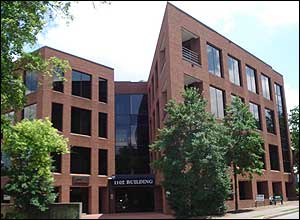Vanderbilt University School of Engineering has established a unique research facility focusing on Multiscale Modeling and Simulation. MuMS is home to four faculty members and their research groups.
An Open House and inaugural MuMS Seminar Oct. 9 will celebrate the recent creation of the space located on Nashville’s historic Music Row.

Multiscale modeling involves the synergistic use of computational methods applicable from the very small to the very large. It relies on state-fo-the-art software technology, much of which is developed in-house, according to Peter Cummings, director of MuMS.
“Research at MuMS spans many length and timescales, from detailed atomistic level simulations to large scale computational fluid dynamics modeling,” said Cummings, John R. Hall Professor in the Department of Chemical and Biomolecular Engineering and founder of the Nanomaterials Theory Institute in the Center for Nanophase Materials Sciences at Oak Ridge National Laboratory.

Linda Petzold, an internationally renowned professor of computer science and mechanical engineering at the University of California-Santa Barbara, will deliver a lecture – “The Emerging Roles and Computational Challenges of Stochasticity in Biological Systems” – Thursday, Oct. 9, at 9:30 a.m. in Jacobs Believed in Me Auditorium in Featheringill Hall. Refreshments will be served at 9 a.m. in Adams Atrium.

The MuMS Open House is 2:30 to 4:30 p.m. in Suite 200, 1102 17th Avenue South.
Drawing from various departments in the School of Engineering, MuMS core faculty includes Cummings, Haoxiang Luo, mechanical engineering; Clare McCabe, chemical and biomolecular engineering; and Çağlar Oskay, civil and environmental engineering.
“The advanced software necessary for our research is in part resulting from MuMS collaborations with Vanderbilt’s Institute for Software Integrated Systems—the world’s leading academic software engineering research institute,” Cummings said.
Cummings explores the use of energy storage mechanisms such as batteries and supercapacitors for alternative energy sources. He relies on the MuMS capabilities for the modeling of physical and chemical phenomena at all scales—vital since materials act differently at the nano level than they do at the macroscopic level. Additionally, he has active research programs in nanomaterials design, and has applied multiscale modeling methods to predict the way in which cancer tumors grow.

Haoxiang Luo, who holds dual appointments as associate professor of mechanical engineering and otolaryngology, uses complex mathematical computations to explore how air coming out of the lungs interacts with the vocal cords in producing sounds.
As Luo advances understanding of how the voice operates, new opportunities arise for treating benign lesions and scarring on the vocal fold. Luo’s three-dimensional modeling is expected to yield additional treatments, diagnoses and medical research. Much of this work is conducted through the MuMS facility.

Clare McCabe, professor of chemical and biomolecular engineering and of chemistry, focuses on computational studies to predict the properties of complex fluids and soft materials. In particular, McCabe uses molecular-based simulation to investigate the structure of lipid bilayers – a thin membrane made of two layers of lipid molecules – in order to understand the barrier function of skin, to understand nanoscale lubrication and develop enhanced lubrication schemes for devices, as well as determine the mechanisms by which enzymes depolymerize cellulose. She also works in the area of molecular theory, to develop accurate tools to predict the thermodynamics of separation processes, with particular emphasis on green solvents and carbon capture.

Çağlar Oskay associate professor of civil and environmental engineering uses computer modeling to predict structural behavior in the airplanes of the future. Computational modeling is required since the severe environments these planes will operate in can’t be replicated in an experimental setting. Knowing how planes will behave at such intense pressures—and for how long—is vital to the plane’s structural integrity. Oskay uses the MuMS facility to develop models to predict whether and how these structures can survive in extreme circumstances.
Contact:
Brenda Ellis, (615) 343-6314
Brenda.Ellis@Vanderbilt.edu
Twitter @VUEngineering